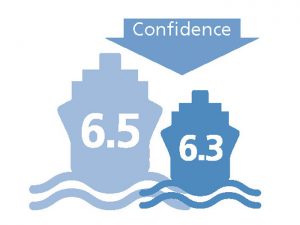Though there were variations in different sizes and types of ships, industry wide all categories of expenditure were down on those for the previous 12-month period.
“This is the third successive year-on-year reduction in overall operating cost,” says Moore Stephens partner Richard Greiner. “This comes as something of a surprise, and is contrary to earlier forecasts. Shipping is clearly watching the pennies, and it may also be the case that more competitive pricing for goods and services has had a part to play in holding down expenditure. Beyond that, as always, the impact of exchange rate changes cannot be determined readily.
“By far the biggest reduction in operating costs, for example, was seen this time in the Stores category. This can be largely explained by the knock-on effect which the fall in oil prices has had on lube oil costs. Such ‘benefits’ do not come often to any industry, and are usually not without a downside, as has been the case in shipping.
“Crew costs were down, albeit marginally, for the first time in recent memory. This could be an indication of a higher level of idle tonnage during the period under review, but is nevertheless welcome news for an industry which has seen crew cost increases of more than 20% at their peak.
“Expenditure on repairs and maintenance was also marginally down on 2013, possibly attributable in part to weak steel prices and in part to the fact that poor freight rates arguably do not encourage owners and operators to engage in anything but the most essential repairs and maintenance. It is to be hoped that there is not a future price to be paid in this respect in terms of either safety or performance.
“The bill for insurance coverage was also down, which will come as little or no surprise in view of the high level of competition in the insurance market, which is arguably even fiercer than that in the shipping industry.
“A third successive annual fall in operating costs must be good news for an industry already facing serious financial challenges and preparing to meet still more. But a bigger-picture view provides an insight into just how much operating costs have increased in recent years. OpCost is now in its fifteenth year of publication. At year-end 2001, the average daily operating cost for a Panamax Bulk Carrier was $3,565. In 2014, it was $6,046. For a Handysize Product Tanker, the comparable figures were $4,164 and $7,931
.”The challenge for shipping is how to build the cost of operation into freight rates in a way which allows for a reasonable profit margin in an industry which is driven by competition and characterized by overtonnaging. Given that, over the next few years, annual seaborne trade is projected to grow at a reasonable rate, and that the cost of regulatory compliance is likely to increase significantly, one would expect operating costs to rise over the same period. Two things are certain. Firstly, the business of operating ships will remain a costly undertaking. Secondly, the impetus for higher freight rates will not come from the shipping industry’s customers.”
The 2015 edition of OpCost is available online. Running cost information is obtained on a confidential basis from clients of Moore Stephens, and from other shipowners and ship managers who submit data for inclusion. OpCost 2015 is available free to owners who submit their data for inclusion. Alternately, it can be purchased.
MORE









